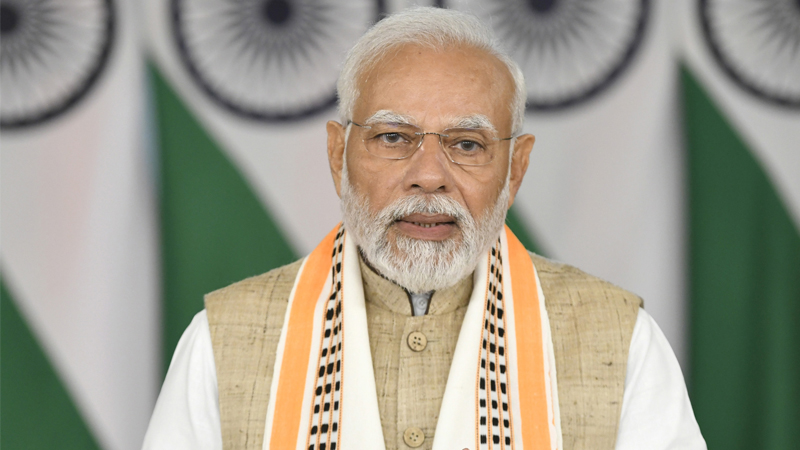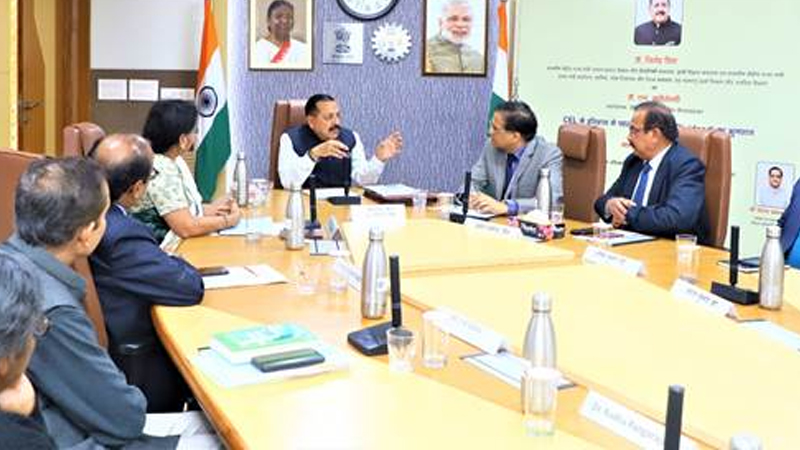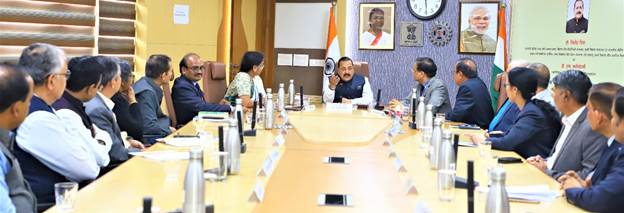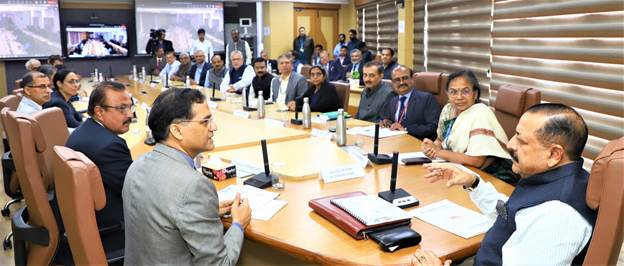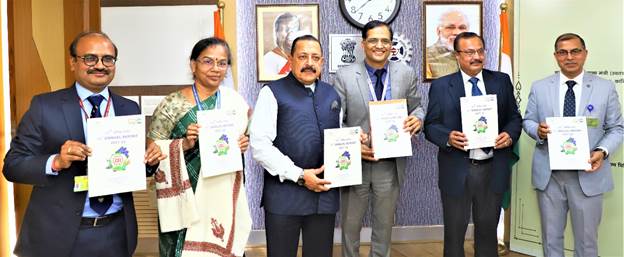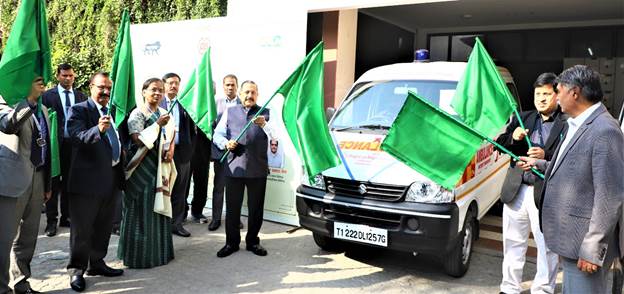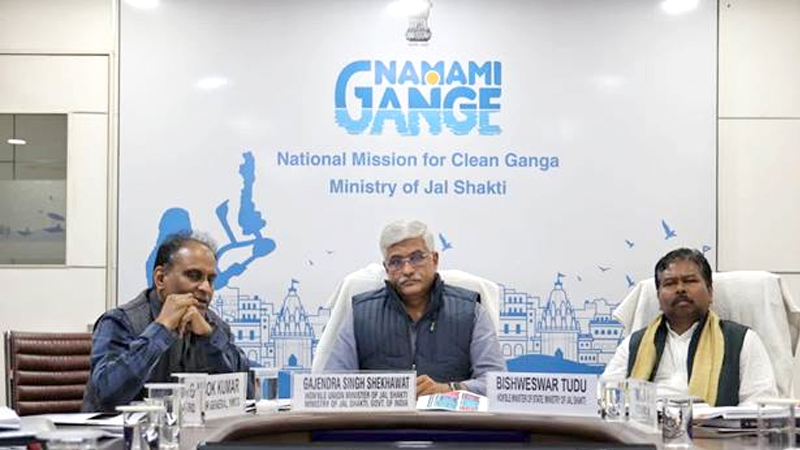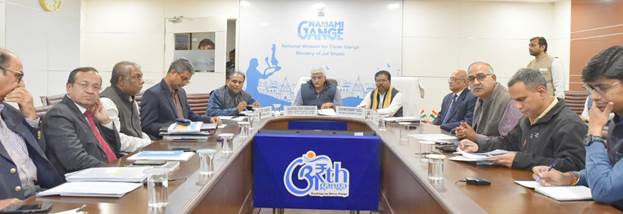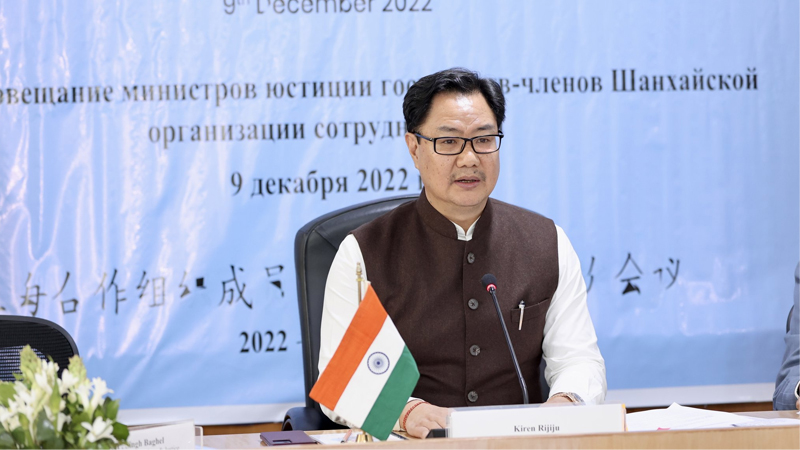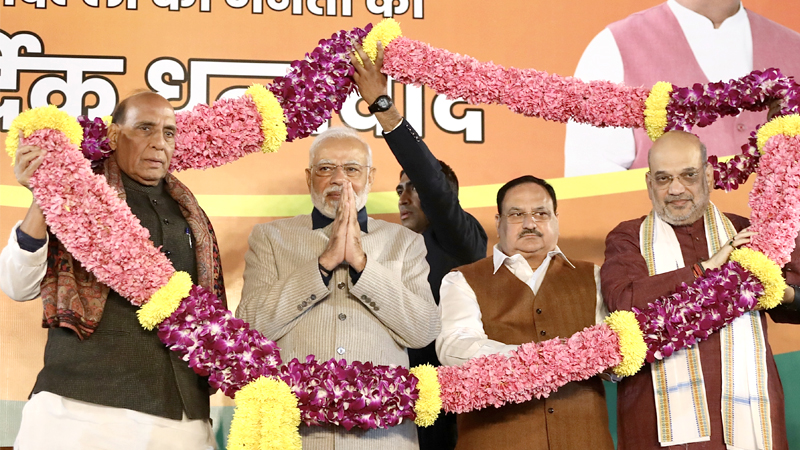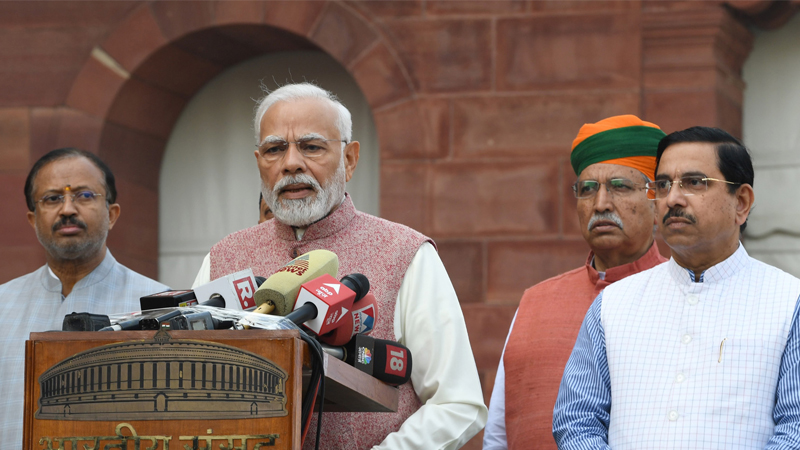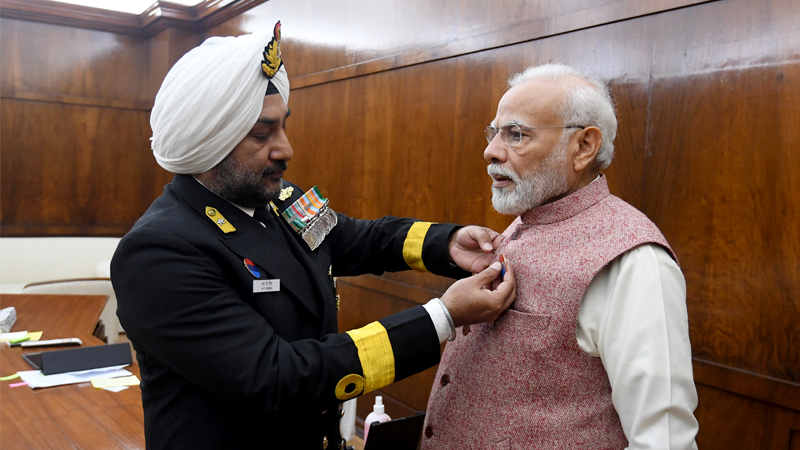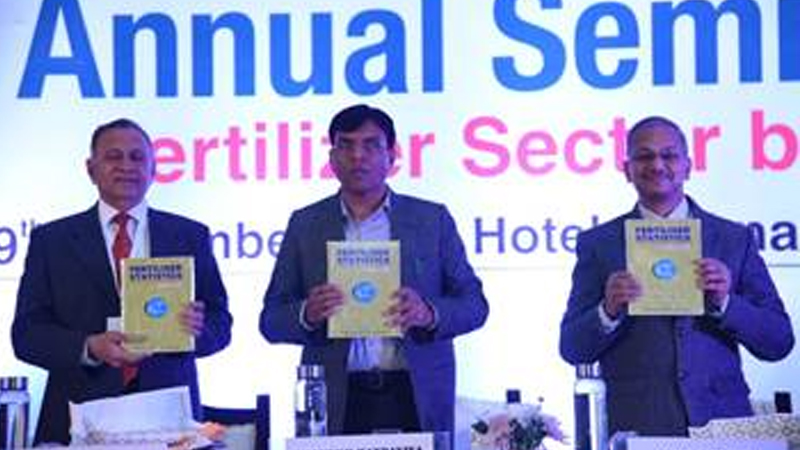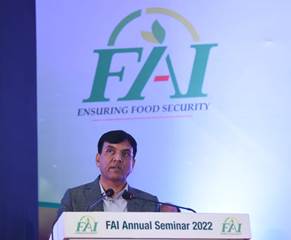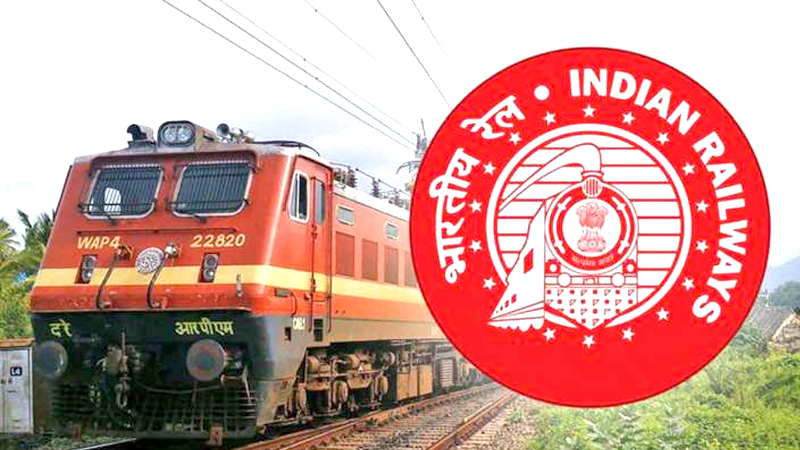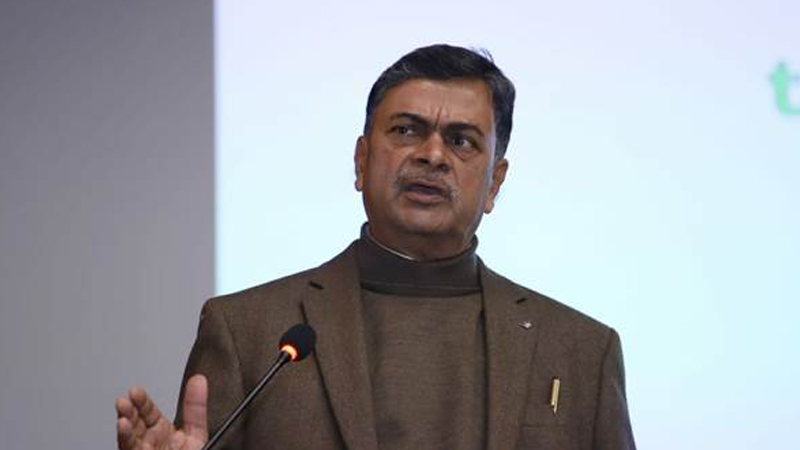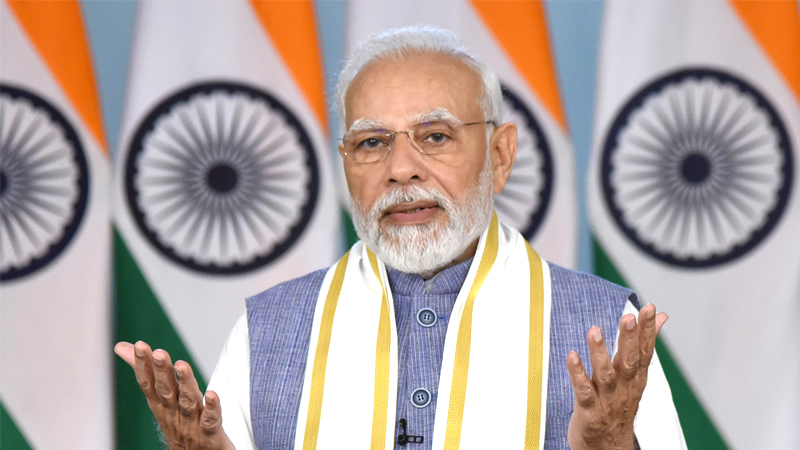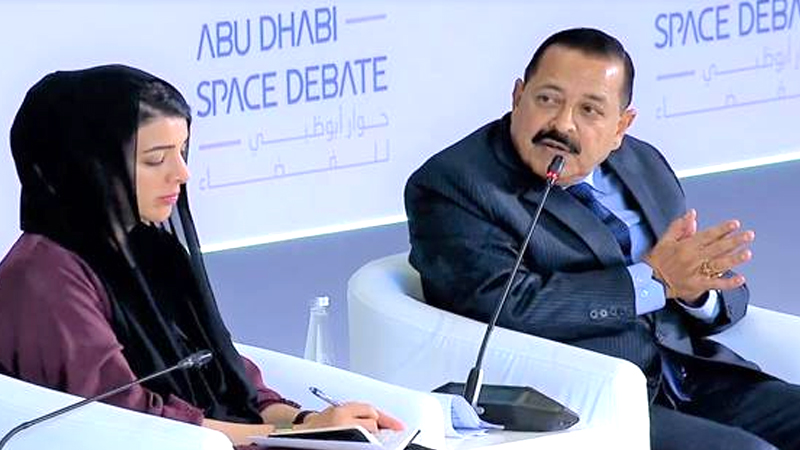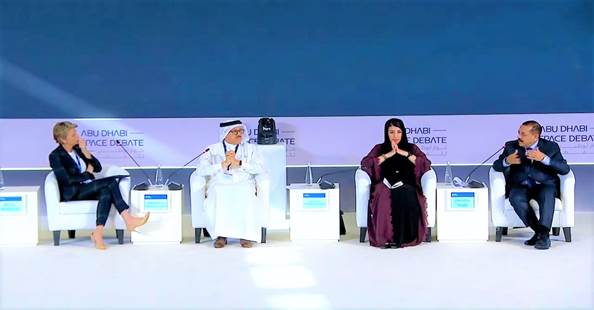Prime Minister Shri Narendra Modi will visit Maharashtra and Goa on 11th December, 2022.
At around 9:30 AM, Prime Minister will reach Nagpur Railway Station where he will flag off Vande Bharat Express. At around 10 AM, Prime Minister will take a Metro ride from Freedom Park Metro station to Khapri Metro Station, where he will dedicate ‘Nagpur Metro Phase I’ to the nation. During the programme, he will also lay the foundation stone of ‘Nagpur Metro phase- II’. At around 10:45 AM, Prime Minister will inaugurate Phase – I of Samruddhi Mahamarg connecting Nagpur and Shirdi and undertake a tour of the highway. Prime Minister will dedicate AIIMS Nagpur to the nation at around 11:15 AM.
In a public function in Nagpur, at around 11:30 AM, Prime Minister will lay the foundation stone and dedicate to nation rail projects worth more than 1500 crores. He will also lay the foundation stone of National Institute of One Health (NIO), Nagpur and Nag river pollution abatement project, Nagpur. During the programme, Prime Minister will also dedicate ‘Central Institute of Petrochemicals Engineering & Technology (CIPET), Chandrapur’ to the nation and inaugurate ‘Centre for Research, Management and Control of Hemoglobinopathies, Chandrapur’.
In Goa, at around 3:15 PM, Prime Minister will address the valedictory function of 9th World Ayurveda Congress. He will also inaugurate three National Ayush Institutes during the programme. At around 5:15 PM, Prime Minister will inaugurate Mopa International Airport, Goa.
PM at Nagpur
Samruddhi Mahamarg
Prime Minister will inaugurate the Phase – I of Samruddhi Mahamarg, covering a distance of 520 Kms and connecting Nagpur and Shirdi.
Samruddhi Mahamarg or Nagpur-Mumbai Super Communication Expressway project, is a major step towards realising Prime Minister’s vision of improved connectivity and infrastructure across the country. The 701 Km expressway – being built at an cost of about Rs 55,000 crore – is one of India’s longest expressways, passing through Maharashtra’s 10 districts and prominent urban regions of Amravati, Aurangabad and Nashik. The expressway will also help improve the connectivity of adjoining 14 other districts, thus helping in development of about 24 districts of the state including the regions of Vidarbha, Marathwada and North Maharashtra.
Espousing Prime Minister’s vision of integrated planning and coordinated implementation of infrastructure connectivity projects under PM Gati Shakti, the Samruddhi Mahamarg will connect to the Delhi Mumbai Expressway, Jawaharlal Nehru Port Trust and tourist locations like Ajanta Ellora Caves, Shirdi, Verul, Lonar, etc. Samruddhi Mahamarg will be a game-changer in providing a major boost to economic development of Maharashtra.
Nagpur Metro
In yet another step that will revolutionise urban mobility, Prime Minister will dedicate ‘Nagpur Metro Phase I’ to the nation. He will flag off two metro trains – from Khapri to Automotive Square (Orange Line) and from Prajapati Nagar to Lokmanya Nagar (Aqua line) – at Khapri Metro Station. The Phase I of the Nagpur Metro is developed at a cost of more than Rs 8650 crore. Prime Minister will also lay the foundation stone of Nagpur Metro Phase- II, which will be developed at a cost of more than Rs 6700 crore.
AIIMS Nagpur
Prime Minister’s commitment to strengthen health infrastructure across the country will be strengthened through the dedication of AIIMS Nagpur to the nation. The Hospital, whose foundational stone was also laid by the Prime Minister in July 2017, has been established under the Central sector scheme Pradhan Mantri Swasthya Suraksha Yojana.
AIIMS Nagpur, being developed at a cost of more than Rs 1575 crore, is a hospital with state-of-the-art facilities, with OPD, IPD, diagnostic services, Operation theatres and 38 departments covering all major speciality and superspeciality subjects of Medical Science. The hospital provides modern health care facilities to the Vidarbha region of Maharashtra and is a boon to the surrounding tribal areas of Gadchiroli, Gondia and Melghat.
Rail projects
At Nagpur Railway station, Prime Minister will flag off Vande Bharat Express that will run between Nagpur and Bilaspur.
At the public function in Nagpur, Prime Minister will lay the foundation stone for redevelopment of Nagpur Railway Station and Ajni Railway Station, to be redeveloped at a cost of about Rs 590 crore and Rs 360 crore respectively. Prime Minister will dedicate Government Maintenance Depot, Ajni (Nagpur) and Kohli-Narkher Section of Nagpur- Itarsi Third line project to the Nation. These projects have been developed at a cost of about Rs 110 crore and about Rs 450 crore respectively.
National Institute of One Health, Nagpur
The laying of foundation stone for National Institute of One Health (NIO), Nagpur by the Prime Minister is a step towards building capacity and infrastructure in the country under the ‘One Health’ approach.
‘One Health’ approach recognises that the health of human beings is connected to the health of animals and the environment. This approach appreciates that most of the contagious diseases affecting humans are zoonotic (animal to human) in nature. The institute – to be established at a cost of more than Rs 110 crore – will collaborate and coordinate with all stakeholders and act as a catalyst to improve the research and capacity building in ‘One Health’ approach across the country.
Other projects
Prime Minister will lay the foundation stone of the project for pollution abatement of river Nag at Nagpur. The project – under National River Conservation Plan (NRCP) – will be operationalised at a cost of more than Rs 1925 crore.
The prevalence of Sickle Cell Disease in the Vidarbha region, especially in the tribal population is comparatively high. The disease along with other haemoglobinopathies like thalassemia and HbE cause significant disease burden in the country. To address this issue, Prime Minister laid the foundation stone of the ‘Centre for Research, Management and Control of Haemoglobinopathies, Chandrapur’, in February, 2019. Prime Minister will now dedicate to the nation the Centre, which is envisaged to become a Centre of Excellence for innovative research, technology development, human resource development, in the field of haemoglobinopathies, in the country.
Prime Minister will dedicate Central Institute of Petrochemicals Engineering & Technology (CIPET), Chandrapur to the Nation. The institute aims to develop skilled human resources to meet requirements of the polymer & allied industries.
PM in Goa
Mopa International Airport, Goa
It has been the constant endeavour of the Prime Minister to provide world class infrastructure and transport facilities across the country. In yet another step towards this, Prime Minister will inaugurate the Mopa International Airport, Goa. The foundation stone of the airport was laid by the Prime Minister in November 2016.
Developed at a cost of around Rs 2,870 crores, the airport has been built on the theme of sustainable infrastructure and has solar power plant, green buildings, LED lights on the runway, rain water harvesting, state of the art sewage treatment plant with recycling facilities, among other such facilities. It has adopted some of the best-in-class technologies like 3-D Monolithic Precast buildings, StabilRoad, Robomatic Hollow precast walls, 5G compatible IT infrastructure. Some of the features of the airport include runway capable of handling world’s largest aircrafts, 14 parking bays along with night parking facility for aircrafts, self-baggage drop facilities, state of the art and independent air navigation infrastructure, among others.
Initially, phase I of the Airport will cater to around 4.4 million passengers per annum (MPPA), which can be expanded to a saturation capacity of 33 MPPA. The airport will boost socio-economic development of the State and serve the needs of the tourism industry. It has the potential of serving as a key logistics hub, directly connecting many domestic and international destinations. It is also planned for the airport to have multi-modal connectivity.
While being a world-class airport, the airport will also provide visitors a feel and experience of Goa. The airport has extensively used Azulejos tiles, which are native to Goa. The food court also recreates the charm of a typical Goan café. It will also have a designated area for a curated flea market where local artisans and craftsmen will be encouraged to display and market their wares.
9th World Ayurveda Congress and National Ayush Institutes
Prime Minister will also inaugurate three National Ayush Institutes and address the valedictory function of 9th World Ayurveda Congress. The three institutes – All India Institute of Ayurveda (AIIA), Goa, National Institute of Unani Medicine (NIUM), Ghaziabad and National Institute of Homoeopathy (NIH), Delhi – will further strengthen research and international collaborations and will also facilitate affordable Ayush services for people. Developed at a total cost of about Rs 970 crores, they will together increase the intake of students by around 400 along with addition of about 500 hospital beds.
The 9th edition of World Ayurveda Congress (WAC) & Arogya Expo is witnessing active participation of more than 400 overseas delegates representing over 50 countries, international students and various other stakeholders of Ayurveda. The theme of the 9th edition of WAC is “Ayurveda for One Health”.


